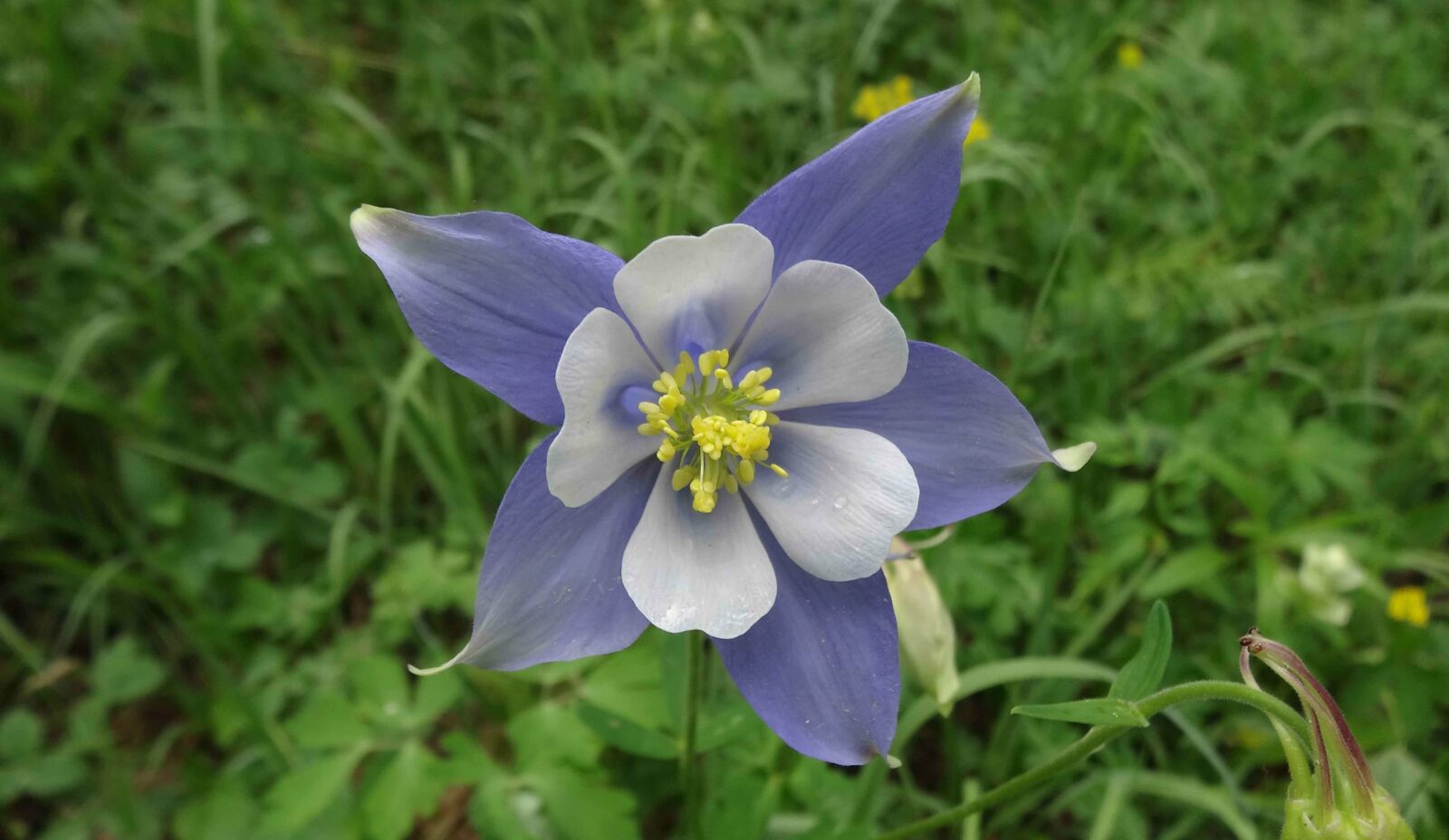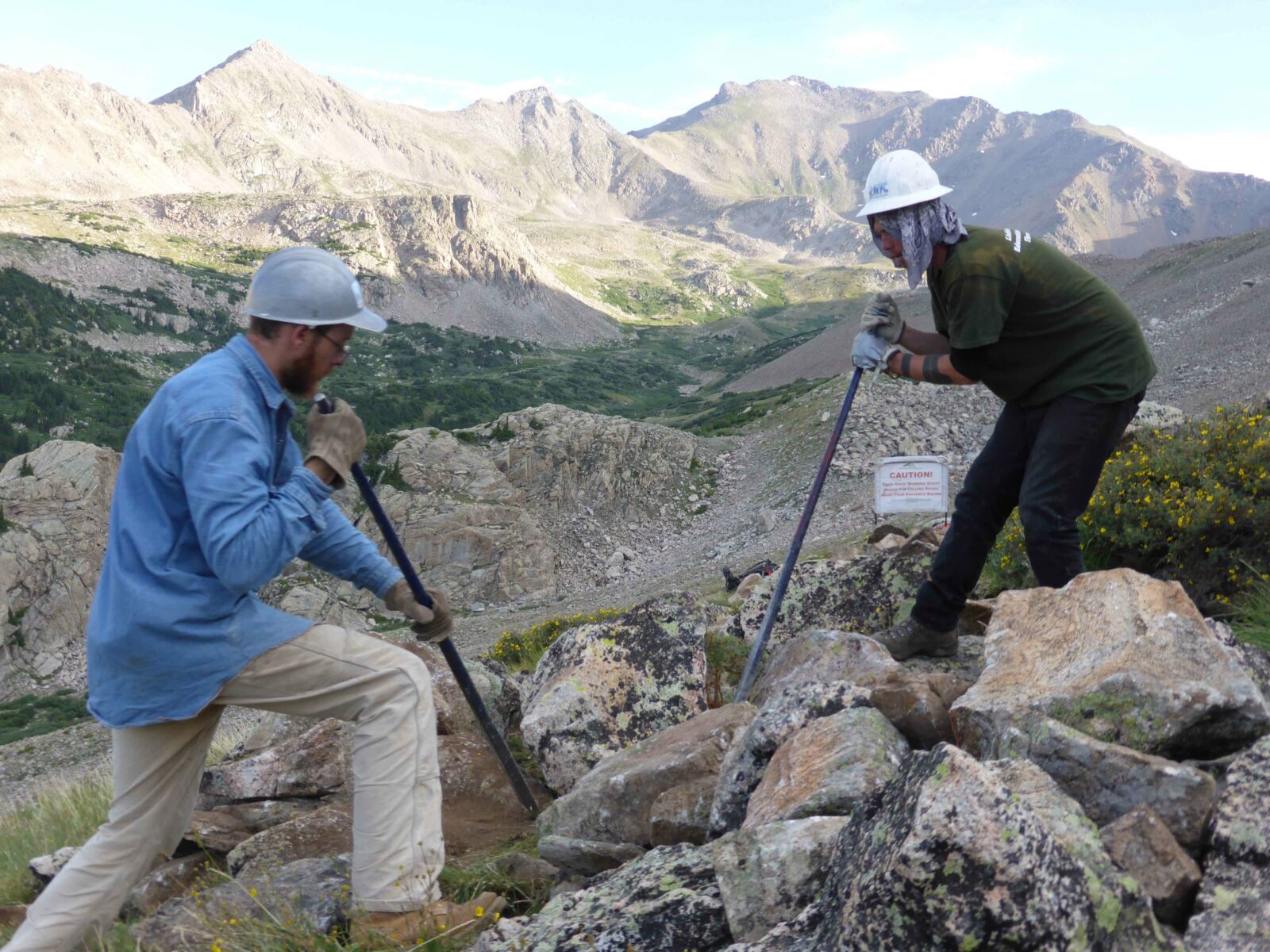In the early 1900s, long before Gore-Tex jackets and Vibram soles, adventurous men and women risked life and limb for the right to stand at the top of some of the highest peaks in the Rocky Mountains. Adorned in long skirts and wool clothes, with layered newspapers protecting against icy winds, these early thrill seekers had a true love of the mountains. While the clothes and gear have changed in the past hundred years, the desire to conquer Colorado’s iconic 14,000-foot peaks hasn’t.
With 54 peaks in Colorado above 14,000 feet, 48 of which span six of the state’s National Forests, the opportunities to feel like you’re touching the sky are almost endless. These Fourteeners are widely recognized as a bucket list activity for visitors around the world, while local “peakbaggers” flock to the adventure and challenge these peaks offer. And flock they do: today, an estimated quarter million hikers seek the experience of standing on top of a Fourteener every year.
Life Above Tree Line
Most hikers complete their summit attempts in the summer, beginning in the conifer forests that flank the lower-elevation mountainsides. As hikers ascend past 11,000 or 12,000 feet, the trees disappear, yielding to a tundra-like alpine plant community of wildflowers, mosses and succulents. Weary mountain climbers focused on reaching their high-elevation destinations may not notice the diversity of stunted, scrubby habitat that clings to life in the thin alpine air, but this ecologically-rare and valuable tundra community exemplifies how plants and animals adapt their life cycles to thrive in a harsh environment.
Cushion plants, like the hardy moss campion (Silene acaulis) escape the strong winds blowing just a few inches above them. Moss campion is one of the most easily recognized tundra plants, and when in flower, the pink cushions brighten the rocky terrain. Moss campion must cross-pollinate in order to form seeds, so it contains a lot of nectar to attract insects. This nectar lies down deep in the flower, however, and can only be reached by bees and butterflies that have long proboscises. The “cushion” of this moss species provides its own “nursery habitat” for its seeds to germinate without being blown off the mountain. Although it’s considered fast growing for a low-lying tundra plant, it expands in diameter only six to ten inches every twenty years or so.

Photo by Loretta McEllhiney, U.S. Forest Service
Colorado columbine.
Many flowering plants of the tundra have adapted to the severe conditions in other ways. Some have evolved dense hairs on stems and leaves that provide wind protection, while others have pigments capable of converting the sun’s light rays into heat. One of the most iconic flowering plants on the tundra is Colorado’s state flower, the Rocky Mountain columbine (Columbine aquilegia). Columbine’s adaptation, growing quickly when the snow melts, transforms dull, rocky slopes into green carpets of life. The plant’s gorgeous flowers produce vast numbers of seeds, which fall to the ground or blow in the wind and create seed banks for future seasons.
For mountaineering “bird nerds,” a watchful eye and a set of field glasses can provide a peek into the world of the White-tailed Ptarmigan (Lagopus leucura). This medium-sized, ground-dweller is the only bird to make the alpine and subalpine zones its home for most of the year, and as such, it’s representative of the specialized life cycle required by wildlife to thrive in the icy tundra conditions.
During the cold, snowy months, it has white feathers that are adapted to keep it warm and hidden under the snow. It also uses stored layers of fat for warmth and energy, although it often stays still for long periods to save these precious energy stores.
In late spring, it molts and grows speckled grayish-brown feathers that provide such effective camouflage that hikers may almost step on the birds before they notice their presence.
Ptarmigans need to eat lots of seeds, flowers, plants and insects over the short summer to build up a new layer of fat for the next winter. When the snow returns, the Ptarmigan grows a brand new set of its specialized white feathers, keeping it warm and hidden.
Extreme conditions may suggest such tundra vegetation and wildlife are almost indestructible, but in reality, they are quite fragile. Ptarmigan evolved without ground-dwelling predators like foxes or coyotes, so they don’t have the skills to avoid a canine whose presence is facilitated by people: dogs. It’s critical that dog owners leash their pets to help protect these threatened alpine denizens.
A Rogue Start
As the number of visitors to these sensitive areas increases so do networks of user-created social trails. These rogue “trails” are not purposefully designed, and they cause serious ecological impacts. Off-trail footsteps trample the fragile alpine plants, leading to paths devoid of vegetation. When fellow hikers follow these seemingly-innocuous short-cuts, more plants are damaged, leading to soil erosion as rain and snowmelt run down the routes. The resulting “trail” often ends up a deeply-eroded gully that requires substantial time, money and resources to repair. In addition to being unsightly and damaging to the sensitive plant and animal communities, these user-created trails degrade watersheds and disrupt ecosystem function when they deliver heavy sediment into tributary streams and reduce food and cover for wildlife.
Traversing a More Sustainable Path
In response to the growing need for restoration and repair, the NFF is launching the Find Your Fourteener campaign. The campaign is bringing together the Forest Service and nonprofit partners to help ensure sustainable access to and enjoyment of the Fourteeners on National Forests throughout Colorado. Maintaining and improving trails on Colorado’s Fourteeners is not a new idea; groups including the Colorado Fourteeners Initiative (CFI), the Rocky Mountain Field Institute, Colorado-based youth corps, and many other conservation and volunteer organizations have been involved with these trails for decades. These groups are now coming together to more strategically address the needs of Fourteeners statewide.

Photo by Lloyd Atheran, Colorado Fourteeners Institute
Trail crew at work on Mount Columbia.
Currently, Fourteener stewardship efforts are limited by funding and Forest Service and nonprofit partner capacity. Thus, the primary objectives of this campaign are to: (1) develop partnerships and funding for stewardship activities on Fourteeners; (2) build capacity for increasing the number of individuals with the right skills needed to build and maintain trails in fragile ecosystems; and (3) to increase the pace and scale of on-the-ground trail improvement projects. The campaign will also incorporate hiker education to help reduce the impacts these users have on the fragile alpine ecosystem.
A Shared Vantage Point
In 2015, the CFI released a “Colorado Fourteeners Report Card,” noting that more than $24 million in baseline investments are needed to create sustainable routes to the summits of all of Colorado’s Fourteeners. Through the Find Your Fourteener campaign, the NFF and its partners will tackle many of these projects in a tiered and strategic effort.
Over the next several years, the NFF will collaboratively improve recreation infrastructure and alpine ecosystems on Colorado Fourteeners, including “front country,” “mid country,” and “back country” peaks. The variety of project types will provide tremendous opportunities for community engagement, allowing citizens to find the volunteer experience that is right for them. For instance, stewardship efforts on front country Fourteeners, such as Mt. Bierstadt, Mt. Evans and Pikes Peak, can involve residents from urban areas like Denver and Colorado Springs. Work on more remote Fourteeners can be accomplished via multi-week hitches by seasoned and committed volunteer stewards.
The NFF has also been working closely with the Forest Service Rocky Mountain Region Office and nonprofit partners to identify “pinch points” that currently limit improvements to these high peaks. The NFF will work with partners to enable improved trail design, project oversight and volunteer training. The NFF will also work with partners to expand or add to the number of pack strings (mules and horses) that can move gear and equipment into remote basecamp locations. Finally, the NFF will support expanding the very short twelve-week youth corps field season, adding an additional week to increase the amount of work that can be accomplished on each peak.
Sustainable Peaks Require Sustained Action
When people first began climbing these sky-scraping peaks for fun, Colorado had about a half-million residents. Now, more than half that many people reach the summit of the state’s Fourteeners every year. Those early adventurers likely didn’t worry about fragile alpine plants or watershed impacts.
But today, swelling numbers of hikers make it critical that we restore and protect these special places. Doing so will ensure that one-hundred years from now, new generations of adventurers can ford the same pristine creeks, skirt trout-filled mountain lakes and feel the same sense of accomplishment that those early peakbaggers did.
The NFF’s Find Your Fourteener campaign is a long-term effort to ensure that these enduring peaks remain healthy, accessible and inviting for decades to come. As Gifford Pinchot, the first Chief of the Forest Service said, “The vast possibilities of our great future will become realities only if we make ourselves responsible for that future.” That future is now and the responsibility is ours.

